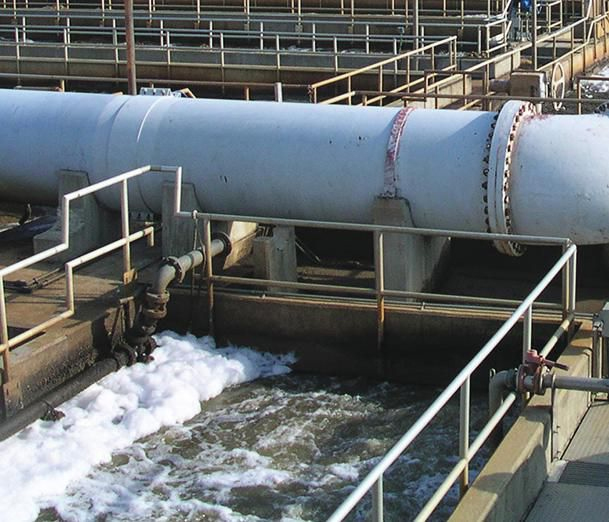Balancing Utility Performance, Cost, And Risk In The Face Of A Pandemic
By Will Williams, Ahmet Ozman, And Mat Powis
A lot will change moving forward, as water, wastewater, and stormwater utilities add pandemic risks to their list of priorities and must consider a growing array of threats in the development of capital improvement plans (CIPs).
Over the past year, many utilities have devoted considerable attention to developing risk and resilience assessments (RRAs) and updating emergency response plans (ERPs) to comply with America’s Water Infrastructure Act (AWIA) requirements and otherwise become more resilient given the ever-increasing number and severity of threats. Unfortunately, pandemic risks were barely on the radar and certainly not a priority. That, of course, will change going forward. Utilities are facing the need to find the right balance between resilience-related investments with those associated with aging infrastructure, often in the face of reduced revenues due to the same pandemic problem. Lower collections and the need to rethink near-term rate increases has changed the financial landscape for many.
New Considerations For Planning, Response, And Recovery
Emergency response is basically a cycle that comprises three phases: planning, response, and recovery. Utilities generally realize that, although they are currently deeply embedded in the response phase of the COVID-19 pandemic, they need to scan the horizon and anticipate the challenges and opportunities ahead in the recovery phase. It’s also important for utilities to capture and incorporate lessons learned into the next planning phase.
The AWIA has been an important new regulatory driver for U.S. water utilities to perform an all-hazards assessment of risks to their operations. Performing an RRA enables a utility to establish the criticality of the asset base, identify credible threats, and quantify the key vulnerabilities that need to be addressed through operational procedures or capital investment.
After a utility assesses risks and resilience, development of an ERP yields strategies, resources, plans, and procedures to address or mitigate the impacts of identified threats. ERPs normally focus on infrastructure assets and prioritize response and recovery to restore asset capabilities; they focus on how to “stop the bleeding.”
In addition, many utilities also have business continuity plans (also referred to as continuity of operations plans or COOPs), which are designed to help a utility to continue essential operations through disruptive events. In contrast with ERPs, COOPs are designed to “keep the heart beating,” with the goal of restoring and maintaining essential operations.
The COVID-19 pandemic revealed that most ERPs and COOPs did not consider pandemic threats sufficiently to provide utility management with adequate direction to manage impacts on the workforce or on the availability of funding to expand or improve the reliability and resilience of existing infrastructure.
It is imperative for utilities to document lessons learned and build them into ERPs and COOPs as appropriate. Some utilities have taken proactive steps to do this, initiating regular interviews with executive, managerial, and frontline staff to capture, document, and analyze the challenges and opportunities presented by the current pandemic. Often undertaken by third-party consulting organizations to ensure independence and confidentiality, these interview-based programs have captured important specific challenges and opportunities, ranging from enhancements to the cadence and effectiveness of staff communication from senior management to improvements in planned office layouts and occupancy rates. Programs such as these can capture valuable operational improvements, increase staff engagement, and raise morale because utilities are perceived to be willing to listen and act on feedback for the general good of the workforce and the business.
Risk-Based Planning For Better Balance
Utilities are still working through the new risks that the pandemic has introduced and adopting new ways of doing business, such as teleworking, developing staff-continuity plans and cross training, staggering shifts to minimize interactions, and revising personnel policies to offer greater flexibility. The novel COVID-19 virus has the potential to disrupt up to 40 percent of the workforce, who may suffer from illness or stay home to care for family members. The pandemic is likely to continue to test utility resources and capabilities in the short term and certainly through the recovery phase. Utilities can’t stop essential maintenance of critical assets no matter how many employees currently work from home or what the financial situation.
But what of the medium and longer term, and how is the next planning phase changing? Over the course of 2020, utilities across the U.S. face constrained budgets as a result of the COVID-19 impacts on industry, businesses, and residential customers. This has driven the need for the development of quick analysis tools such as the U.S. EPA’s Water Utility COVID-19 Financial Impact Tool to assess high-level revenue shortfalls. Using this tool to quantify financial impacts will help utilities adjust spending.
In addition, utilities are increasingly adopting risk-based planning approaches to investigate the implications of reduced revenue on their capital improvement plans (CIPs). In many cases, this involves the use of innovative budget prioritization and application processes. These processes apply advanced analytics to quantify and optimize planning outcomes that explicitly consider uncertainty and risk. In some cases, existing risk-based prioritization approaches facilitate high-level sensitivity analyses that inform the general manager, directors, board, and commission about important tradeoffs between the planned reduction in capital expenditure, resulting impacts on the corporate risk profile, and potential need for borrowing or exploring alternative financing options.

Balancing performance, cost, and risk through risk-based planning can help utilities meet long-term goals as well as short-term needs. (Credit: Black & Veatch)
Utilities that have developed risk-based decision processes are able to demonstrate that they are making sound investment decisions to staff members and other stakeholders. These utilities can review and reprioritize their capital improvements based on the availability of funding and staffing levels or key skills. This practice results in a robust analysis that stands up to scrutiny and is repeatable, auditable, and transparent.
At the end of the day, U.S. communities still have an infrastructure problem, and the challenges are not going to evaporate overnight. Both the chronic issues of investment in aging infrastructure and the acute challenges of resilience and pandemic response need to be addressed in a balanced way. Projects can be prioritized based on risk, and an optimal CIP can be developed that maximizes asset performance, optimizes cost, and reduces enterprise risk.
Beyond immediate considerations, such as operational and staffing challenges and projected funding limits, weaving overall asset management and workforce planning objectives, as well as initiatives related to social, climate change, or other strategic issues, into decisions will yield integrated solutions that optimize the lifecycle of the existing asset base. Longer term, utilities that can balance resilience investments with other important utility management elements will see sustainable business improvement.
R&R As Who We Are
The best-prepared utilities are the ones that have embraced risk-based planning and implemented robust asset management programs. They can make effective decisions in times such as this and in the future can also systematically revisit difficult decisions and leverage what they’ve learned during emergency response and recovery.
While it is impossible to predict how long the current pandemic will last, utilities understand the need to plan for a new normal and are increasingly implementing risk-based planning approaches to help them achieve an optimal balance of performance, cost, and risk. In short, risk and resilience need to stop being the purview of a defined team or group and start being engrained into our culture. As an industry, we need to mirror the focus placed on implementing successful safety programs by making risk and resilience part of who we are rather than just something that we do. Utilities that have made this culture change are reaping the rewards, and those who have yet to adopt risk-based planning will benefit by doing so posthaste.
About The Authors
 Will Williams is associate vice president of asset management in Black & Veatch’s water business. With 30 years of international asset management experience, he specializes in risk-based planning and asset management program development and implementation. He leads the company’s AWIA-related services — including numerous risk and resilience assessments and emergency response plans — and is co-principal investigator for Water Research Foundation project 5014. The research project team is developing a framework for resilience planning for water, wastewater, and stormwater utilities.
Will Williams is associate vice president of asset management in Black & Veatch’s water business. With 30 years of international asset management experience, he specializes in risk-based planning and asset management program development and implementation. He leads the company’s AWIA-related services — including numerous risk and resilience assessments and emergency response plans — and is co-principal investigator for Water Research Foundation project 5014. The research project team is developing a framework for resilience planning for water, wastewater, and stormwater utilities.
 Ahmet Ozman is a licensed civil engineer with more than 25 years of experience in the water industry, specializing in asset management, risk management, resilience assessments, and planning. Most recently, he has co-led Black & Veatch’s work in AWIA risk and resilience assessment services across the U.S. and is part of the WRF 5014 research project team developing a practical framework for infrastructure resilience. Ozman is one of the company’s IAM-Endorsed Assessors for asset management program assessments.
Ahmet Ozman is a licensed civil engineer with more than 25 years of experience in the water industry, specializing in asset management, risk management, resilience assessments, and planning. Most recently, he has co-led Black & Veatch’s work in AWIA risk and resilience assessment services across the U.S. and is part of the WRF 5014 research project team developing a practical framework for infrastructure resilience. Ozman is one of the company’s IAM-Endorsed Assessors for asset management program assessments.
 Mat Powis is a manager in the Planning and Asset Management group of Black & Veatch’s water business. He has extensive project and modeling experience in helping utilities balance revenue requirements while maintaining a strong financial position and addressing aging infrastructure using asset and project capital prioritization and budget optimization, affordability studies, financial forecasting, cost-of-service rate studies, bond feasibility studies, and valuation analyses.
Mat Powis is a manager in the Planning and Asset Management group of Black & Veatch’s water business. He has extensive project and modeling experience in helping utilities balance revenue requirements while maintaining a strong financial position and addressing aging infrastructure using asset and project capital prioritization and budget optimization, affordability studies, financial forecasting, cost-of-service rate studies, bond feasibility studies, and valuation analyses.
